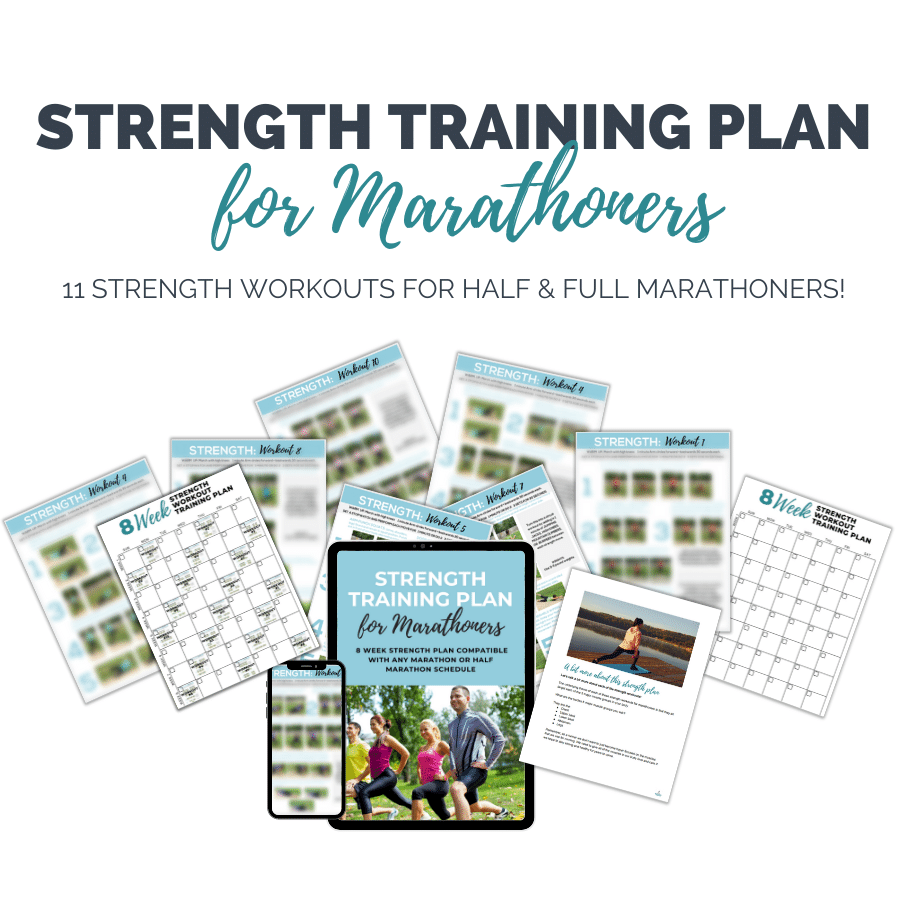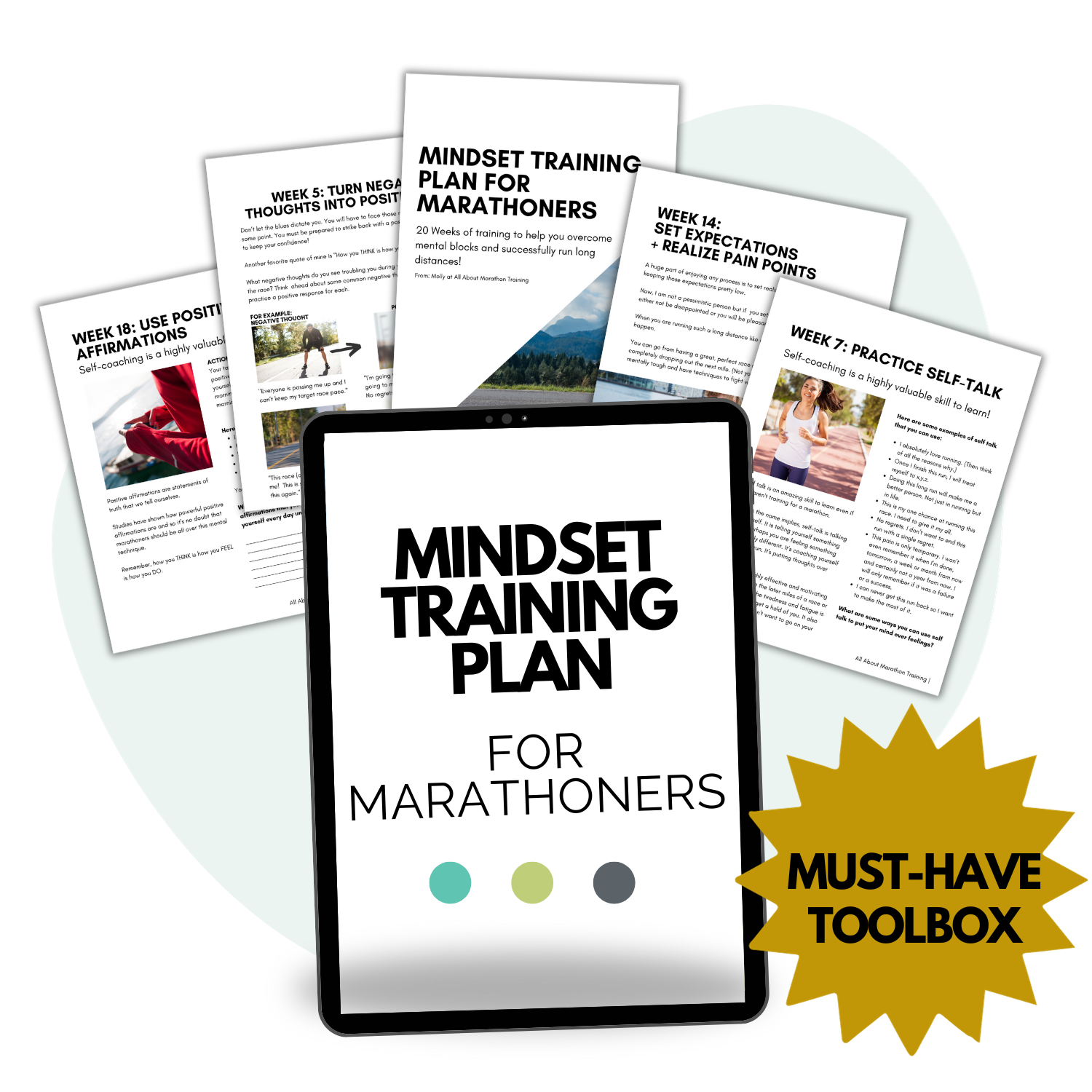9 Tips to Build Endurance and Stamina as a Runner
Endurance in the running world means the ability to run for a long period.
Obviously, this is a necessary component to efficiently and effectively get through the half marathon and full marathon distances.
Also, beginner runners and veteran runners alike should look to increase running endurance in order to achieve personal goals.
Technically speaking, when running longer distances, it is necessary to be able to take in much oxygen and deliver it throughout your body efficiently.
This is building endurance and it means that your aerobic capacity (also called your cardio fitness) is increasing.
By building your endurance, you are basically enabling yourself to be able to run a further distance than if you hadn’t put the effort into the building process.
These longer runs will be easier to navigate and the whole operation will be more enjoyable.
Benefits of Building Endurance
Besides being able to run longer distances, building endurance has additional benefits.
- Muscles will be strengthened helping to ward off fatigue.
- The heart is strengthened making your long distance run more efficient and less laborious.
- Joints are bolstered aiding in the overall running process.
- Metabolism is improved to support nutrition and thereby fitness.
- Risk of injury is reduced.
- Cognitive function is enhanced providing for a boost in mental health.
Also, by increasing your endurance, your running stamina (which is being able to put out maximum effort for as long as possible) is also being improved.
Increasing stamina means you can train at a higher intensity for a longer period of time.
So although the average runner won’t run an entire marathon at a high intensity level, implementing high intensity activities in your training will advance your endurance making it very doable to get through the marathon.
Keep on reading to explore the best ways for amplifying your running endurance.
First - Assessment of Current Fitness to Use as Gauge
Your current cardio fitness level is the starting point of where you will begin to build from.
Being that it’s sometimes difficult to see improvement in regards to cardio fitness and hence, endurance progression, begin by evaluating your current level. This will serve as a benchmark from which to assess progress.
Following are ways of determining your current fitness level:
- One way is to simply record the time it takes to run your maximum distance. Repeat every ten days to two weeks and compare results.
- Or, for a more formal diy approach, take the “Cooper test” also known as the 12-minute run test. This test measures aerobic fitness and also estimates a runner’s VO2 max. (VO2 max is the maximum amount of oxygen utilized during intense training.) To do this test, check out my instructions here. And here’s more about VO2 Max Fitness that I referred to.
- Now, for the more gung-ho runners who want concrete fitness measurements, the best way to get sure measurements is through an exercise stress test performed by a health professional. With this type of test, you’ll perform various walking, jogging and/or running exercises while your breathing, heart rate and blood pressure are being monitored. Repeating the test every six months or so will provide a solid indication of progression.
It’s a good idea to keep a training log that will provide history and valuable insight to be periodically reviewed.
Not only should you track your runs but also notate additional elements such as your heart rate and the circumstances of your run (weather, mood, stress level…).
Consistent improvement will indicate progress and, hence, provide motivation. To get you started tracking, here’s my digital running log that’s user friendly!
The 9 Steps and Techniques for Building Endurance
1. Create a Solid Foundation
First, before plunging into endurance building techniques, a strong foundation must be established.
This means the right running form needs to be developed, the proper footwear utilized and a structured training plan lined up.
Proper Running Form
When running technique is efficient, not only is endurance improved but the risk of injuries is minimized. Proper form for running includes:
- Posture: Maintaining a relaxed form for fluid motion is ideal. Shoulders should be down, back and relaxed, chest out with head level and facing forward (not jutting forward as you run). Your view should be about 10 to 20 feet in front of you.
- Midfoot strike: Avoid landing on your heel. Aim instead for a midfoot strike as the impact on joints is reduced. Also be aware of landing pretty much under where your hip lines up (for balance) and not out front (overstriding).
Pounding and bouncing are both to be avoided so focus on light running. Less energy is used and impact is minimized. - Quick, short strides: Friction is minimized by strides that are shorter. Energy is also preserved when over-striding is eliminated.
- Arm Position: Arms should be at a 90-degree angle and should swing gently forward and backward (not side to side) to aid your propulsion.

Proper Footwear
Appropriate shoes can make all the difference!
Considerations should include shoes with good arch support, cushioning and appropriate shoe width.
For guidance in picking out a good running shoe, this post on the best running shoes will be helpful. -And if you’ve already got your heart (and feet) set on the HOKA brand, this list of HOKA shoes will come in handy.
To ensure optimal cushioning and support, shoes should be replaced every 300-500 miles.

Structured Training Plan
Your training plan is truly the backbone of your journey to endurance building. Make sure your plan is tailored to your goals and current fitness level and provides a regular running schedule. The following factors should be included:
- Moderated Progression: To escape from injuries and overtraining, gradually increase mileage as well as intensity.
- Variety: Having a mix of training components in your plan will ensure improvement in both endurance and stamina. Easy runs, tempo runs, interval workouts, cross training and long runs should all be included.
- Rest and Recovery: Your plan needs to incorporate a rest period to allow for recovery and to adapt to the training stimulus.
-And did you think I’d neglect to guide you to a list of great marathon training plans? Check out the large variety here!

Improve your Running Breathing Pattern
Effective breathing while running goes hand-in-hand with building endurance. Inhaling more oxygen will keep you in your aerobic zone and make your running way more productive.
By inhaling more oxygen, your heart rate stays steady, stress on the body is more calm, fatigue is kept at bay and all of this helps you to run longer! Yay!
See my breathing tips in this post for more of the “whys” and, of course, the “how-tos”.

2. Don’t Overlook Good Nutrition
Consuming a balanced diet is crucial for building endurance and stamina. Your energy levels, overall performance and recovery time will be significantly impacted by what you eat throughout the duration of the training program.
Much has been already written on this important subject. Perusing through any (all?) of the following will provide your fill.
Marathon Nutrition: Your Guide to Eating Well
Food for Runners: What to Eat Before Your Long Run
Nutrition for Runners: How to Refuel During a Long Run
Food for Runners: What to Eat After a Long Run to Recover Quickly!
Nutrition for Runners Before a Marathon Race
Nutrition for Runners: Half Marathon Training vs. Marathon Training Diet
The Worst Marathon Nutrition Mistakes You can Make
And I even have this “Eat Like a Marathoner” nutrition course!

3. Utilize Cross Training and Strength Training
To build running stamina along with endurance, implementing some cross training will serve you best.
Building overall muscle strength and resilience can especially be done by incorporating strength training exercises. These types of exercises will target a variety of muscles that will be beneficial to your running program.
I have a series of 12 beginner strength workouts for runners here!
Focus on:
Core Strength
Maintaining stability and balance throughout your run will be possible by having a strong core and upper body.
Exercises such as planks, Russian twists (Here’s a good resource for how to do these if you’re unfamiliar with them.) and leg raises can be incorporated into your routine.

Lower Body Strength
Runners absolutely need to have lower body strength for efficient and powerful running.
Legs and glutes can be strengthened by doing squat jumps, lunges and deadlifts.

Cross-Training
Supplement your training program with other forms of exercise to enhance flexibility and prevent overuse injuries.
Swimming, rowing, skiing, cycling, to name a few, are good choices. Here's more information on cross training as a runner plus some of my favorite cross training videos for runners here.
4. Increase Mileage and Gradually Progress
Building endurance takes time as your body must adapt little by little. Progressively increasing your weekly mileage is the main means to accomplish this.
Here’s the specifics on how to do this:

Establish Mileage Goals
Having your race distance in mind, set mileage goals that prepare you for that distance.
Be realistic and gradually increase the mileage as your body adapts.
Gradually Increase
To avoid overtraining and injuries and to have a parameter to go by, gradually increase your weekly mileage by no more than 10%. (Some runners will do best to go even more slowly than this recommended rule.) This will keep you in check and prevent you from moving forward too quickly.
Enthusiasm can actually be hindering as it tends to want to ignore body signals - subtle or not - and plow on at a rate that can lead to injuries.
Limiting yourself allows your body to progress at a safe rate.
Incorporate Long Runs
Long runs are a great way to build mental toughness and physical endurance.
Run a distance that’s a little uncomfortable and gradually increase this distance every 1 to 2 weeks.

5. Implement Interval Training
Alternating between high-intensity and recovery periods is a powerful tool for increasing endurance and stamina. This form of speedwork is essential for training your body to perform optimally for longer periods of time.
Incorporate this training into your program by one (or more) of the following methods:
Fartlek Runs
This freestyle form of speed training keeps your workouts challenging by creatively mixing up your speed workout goals and objectives to what suits you.
You alternate between running at a faster pace with slow paces within a single run to enhance your aerobic base and anaerobic (running with energy when your body has little oxygen) capacity.
Structured Track Workouts
Using a track, you’ll run at a high intensity for a predetermined distance (say ¼ of a mile or 400 meters) and then briefly recover before repeating the distance.
As your fitness improves, you should increase the number of intervals performed as well as the distance covered.

Hill Repeats
Your body will be forced to work harder by running uphill - improving endurance and strength.
A hill with a moderate incline is ideal. Sprint to the top of the hill and then on the way down, recover. Repeat many times. Subsequent hill repeats training should have you doing more hills.
-And if you want to use the treadmill for an effective hill workout, see this post here!

High-Intensity Interval Training
HIIT has been shown to be highly effective in increasing endurance and stamina. Repeated intense anaerobic exercises employing maximum effort are alternated with brief recovery periods.
New runners should probably hold off for a little bit in order to allow the body time to build up to the faster speed and intensity of HIIT workouts.

6. Perform Tempo Runs
Tempo runs, or lactate threshold runs or just threshold runs as they’re sometimes called, play a significant role in building endurance and stamina.
This type of running involves running at a slightly below lactate threshold pace for a sustained amount of time.
The benefits of tempo runs are they help increase your lactate threshold.
This means maintaining a higher intensity for a longer duration before fatigue presents itself is possible. Your body is taught to clear lactic acid efficiently with these workouts.
To implement, do the following:

Determine Current Threshold
To determine your threshold, run at a comfortably fast pace for about 20 to 30 minutes.
Make sure to note the point when you start to feel a significant effort increase.
Schedule Tempo Runs in Training Plan
Once a week, or every other week, schedule a tempo run. Start with a warm-up, set a distance or time (say 20 minutes or so) and then run at your tempo pace. Finish with a cool-down.
When fitness progresses, gradually increase the duration (or distance) and even your running speed.

7. Develop Mental Fortitude
If you’ve been following this site for a while now, you well know that long distance running and hence, endurance running, is just as much a mental challenge as it is a physical activity.
Pushing through difficult moments during long distance running necessitates developing mental toughness. Below are strategies for building mental resilience:

Visualization Techniques
Motivation and confidence will be boosted by employing visualization methods.
Periodically, mentally imagine yourself reaching personal running goals.
Visualize success in the different aspects of your training leading up to and including (of course) your marathon or half marathon race.

Self-Talk
Instead of allowing negative thoughts to creep in, focus on positive self-talk.
Replace “I’ll never be able to do this,” with “I’ve got this! I will push through this!”
Employ Mantras
Repeating personal mantras such as “I am a runner! I can do this!” or “Keep on truckin’ - one step after the other’” or “Push harder” will keep you going when the going gets tough.
There’s something about that rhythmic cadence that helps you persevere.

Relaxation and Mindfulness Approaches
To help manage the stress of the distance, mindfulness techniques can be practiced.
Deep breathing and relaxation exercises often do the trick.

Manageable Segments
Breaking down your long run into smaller increments really helps with the mental challenge. Refrain from focusing on the full distance and instead, create smaller distance or time chunk goals.
My 20 week mental training plan for marathoners is great for having a concrete means to really train your thinking while running! These actionable strategies will provide positivity and power to your marathon training!
8. Put into Action Rest and Recovery
Rest and recovery are often overlooked when talking about building endurance but are in fact, crucial elements. Repairing and adapting to the physical and mental stress of running is a necessary aspect.
Prioritize recovery by:
Ensuring Adequate Sleep
Surprisingly it sometimes takes effort to make sure we get enough zzz’s so it might require actually scheduling in your sleep time. 7 to 9 hours should be the aim for quality sleep per night.

Including Active Recovery
Engage in lower intensity activities throughout your training plan.
Activities that promote circulation such as swimming or walking will aid recovery.

Including Rest Days
Rest days should be scheduled for full body recovery and to prevent overtraining.
9. Avoid Overtraining
Although building endurance requires you to push yourself, be aware of overtraining. Listen to your body by paying attention to the following signs:
- Abnormal fatigue
- An elevated heart rate at rest
- Illnesses that are frequent
- Muscle soreness that lingers
- Unable to sleep
- Performance challenges
Any of these signs can be an indication that you’re overtraining and need to cut back by running a shorter distance at an easy pace, adequately rest and even possibly seek medical attention.

Summary
Building your running endurance takes time, determination and perseverance.
Using the above techniques with consistent training will significantly contribute to achieving your race pace goal helping you to also build stamina while avoiding injuries.
Optimal performance, here you come, right across that finish line!
BTW - Here is an overview of a variety of running workouts (some of which overlap those mentioned above) that are a helpful resource in your goal to building endurance.
Related Pages:
👋Sign up to receive the free printable strength exercises for runners: 👇
 |
Your second block of text...
As featured on:

Resources Used:
https://www.roadrunnersports.com/blog/how-to-build-endurance
https://www.verywellfit.com/tips-for-proper-running-form-4020227
https://www.runnersworld.com/uk/nutrition/a761780/rws-complete-guide-to-hydration/
https://www.runnersworld.com/training/a20781512/the-10-percent-rule/
https://www.runtastic.com/blog/en/tips-on-how-to-increase-running-stamina/
https://www.nike.com/a/increase-stamina-endurance-for-running
https://www.playmakers.com/good-form/good-form-running/










New! Comments
Have your say about what you just read! Leave me a comment in the box below.